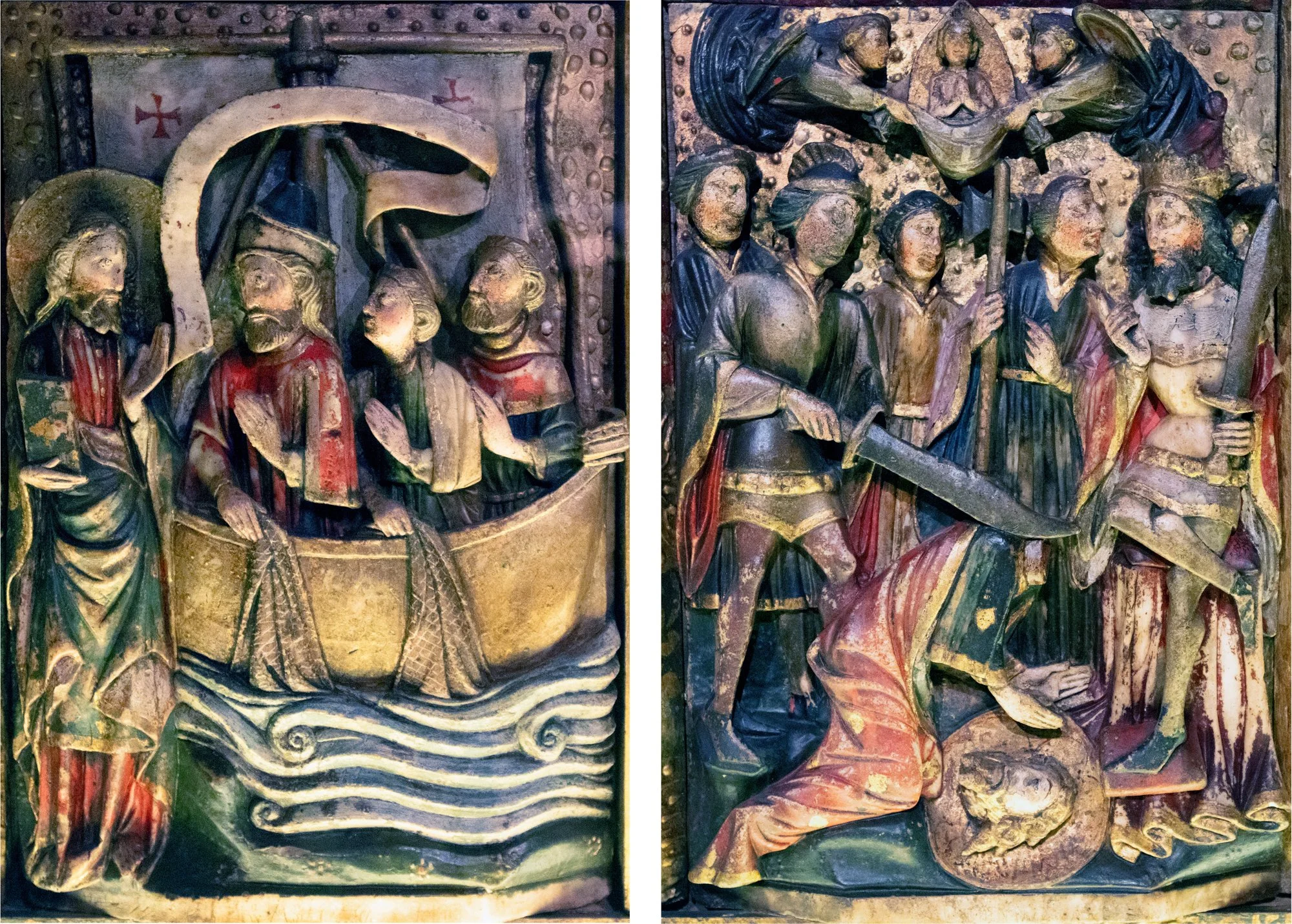Two panels from the Goodyear Altarpiece (c. 1456, Nottingham workshops; now in the museum of the Santiago de Compostela Cathedral).
Left: The Calling of Saint James and John, shown in their fishing boat on the Sea of Galilee as Christ summons them to follow him. Right: The Martyrdom of Saint James, depicted kneeling before his executioner, while disciples plead for his body before King Herod. Both alabaster reliefs retain their original polychromy in vivid reds, blues, and golds.
On May 25, 1456, the records of Santiago de Compostela Cathedral note the appearance of an English pilgrim-priest: John Goodyear, rector of Chale on the Isle of Wight. At the high altar he offered a retable of wood, its alabaster figures painted in gold and blue, narrating the life of Saint James. The gift came not only as a personal act of devotion but as part of a much wider story: the surge of European pilgrimage in the fifteenth century, when Compostela was drawing tens of thousands of pilgrims from across the continent.
Goodyear’s offering was both precious and practical. Alabaster altarpieces from the Nottingham workshops were highly sought after across Europe. Lighter and easier to carve than marble, they could be shipped from English ports to Galicia or Portugal, where pilgrim traffic was at its height. For churches with modest means, or for private chapels, they provided affordable yet richly decorated devotional art.
The priest, however, knew the risks of such treasures disappearing. He made his donation conditional: the altarpiece could not be sold, pawned, or removed to another shrine, and it must always remain “within the body of the church.” The cathedral canons accepted these terms, and the work entered the treasury, later passing to the relics chapel and eventually to the museum.
Almost six centuries on, the Goodyear Altarpiece still survives. Its five panels—depicting the calling, mission, preaching, martyrdom, and translation of Saint James—embody both the artistry of medieval England and the deep ties that pilgrimage created across Christendom.


